

An example of legends for Updated Italian Keyboard.
Access points to secondary layers are also represented in this specimen.
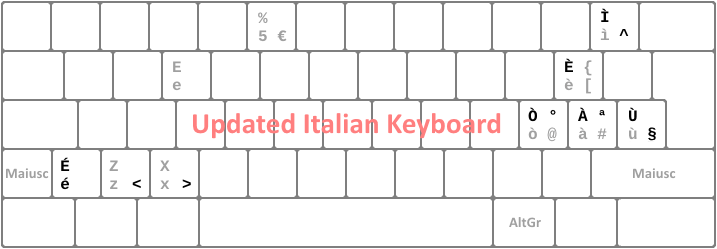
Place the mouse over the image to display the traditional keyboard.
Place the mouse outside the image to display the Updated Italian Keyboard.
In the diagram above, the keys whose legends in traditional Italian keyboard match perfectly with Updated Italian Keyboard mapping have been left blank. In keys where there is some difference, characters that match perfectly are shown in grey, and characters that differ are shown black. Slide the mouse pointer over the image or outside of it to compare the two keyboards.
Given that an example of correct legends for the Updated Italian Keyboard is the one shown in the photograph above, this page describes the differences from traditional keyboard legends.
Note that in the Updated Italian Keyboard the uppercase accented vowels are typed as simply as any other uppercase character, by just adding the Shift modifier to the lowercase character. In order for this to be possible some characters are repositioned with respect to the traditional Italian keyboard:
The above points describe all the discrepancies between the legends of the traditional Italian keyboard and the character map of the Updated Italian Keyboard. Note that, apart from the é, they affect rarely used characters.
“On-Screen Keyboard” Windows™ function
The “On-screen keyboard” function displays on screen the characters of your keyboard, including those accessible by the modifier keys. The function can be called up by typing "on-screen keyboard" in the search box of the taskbar.
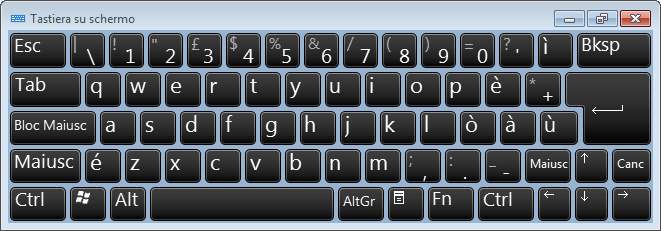
On-screen keyboard with no modifier keys pressed displays the characters in first position
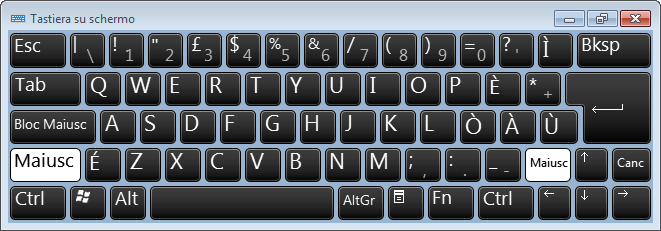
On-screen keyboard with Shift pressed displays the characters in second position
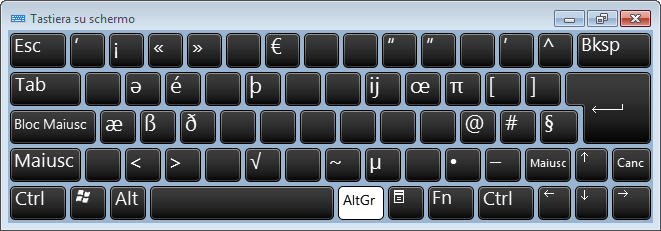
On-screen keyboard with AltGr pressed displays characters in third position
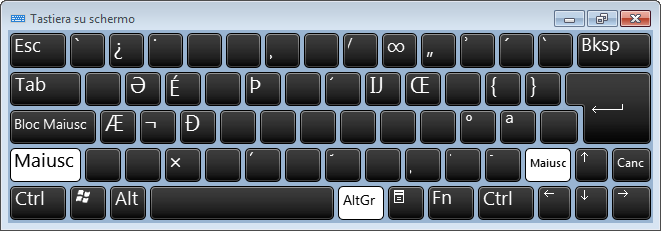
On-screen keyboard with both AltGr and Shift pressed displays characters in fourth position